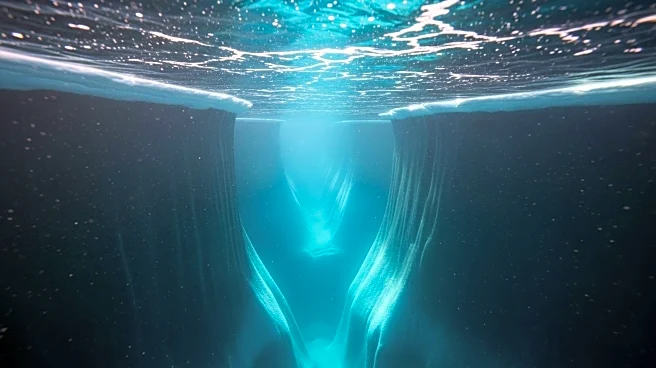What is the story about?
What's Happening?
Researchers have uncovered a vast network of 332 submarine canyons beneath Antarctica's ice, significantly altering the understanding of ocean currents and ice melting processes. Led by Dr. David Amblàs and Dr. Riccardo Arosio, the study utilized high-resolution bathymetric data to map these geological features, which play a crucial role in the movement of water, heat, and sediment in the polar region. The discovery reveals that these canyons act as conduits for oceanic exchange, influencing the formation of Antarctic Bottom Water and potentially accelerating ice shelf melting. The findings suggest that previous models underestimated the complexity of Antarctica's seafloor, impacting global sea-level projections.
Why It's Important?
This discovery has profound implications for climate modeling and sea-level rise predictions. The detailed mapping of Antarctica's seafloor provides new insights into how warm water reaches glacial beds, contributing to ice loss. Accurate models are essential for assessing the risks to coastal cities and planning for future climate change impacts. The research highlights the need for continued exploration and data collection to improve understanding of Antarctica's role in global climate systems. The findings could lead to revised risk assessments and more effective climate policies.
What's Next?
Future research will focus on gathering more detailed bathymetric data, particularly beneath floating ice shelves. Scientists plan to use autonomous underwater vehicles, satellite remote sensing, and oceanographic instruments to study these canyons in real-time. The ongoing mapping efforts are part of the Seabed 2030 initiative, aiming to chart the global ocean floor in detail. The continued exploration of Antarctica's seafloor is expected to uncover more secrets about its influence on the planet's climate engine.
AI Generated Content
Do you find this article useful?

















